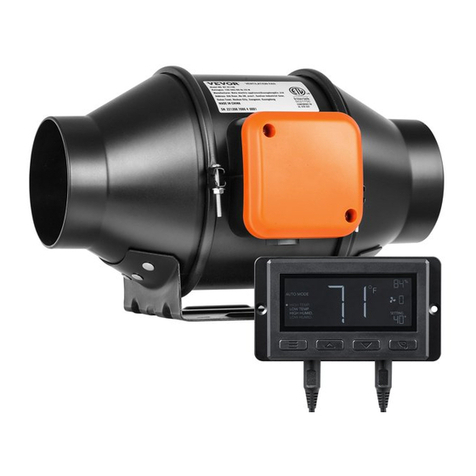
DANGER: Do not use a power supply that does not meet the rated voltage. The use
of non-compliant power supplies can cause fire or electric shock.
CAUTION:
1.Disconnect the fan when moving from one location to another.
2.If the machine emits smoke, odor, motor noise and other abnormal conditions, please do
not use it. It may cause fire or electric shock.
3.Do not disassemble, repair or rectify the machine during use. Doing so may result in fire
or electric shock and personal injury.
4.If the machine is not used for a long time, please unplug the adapter from the socket.
5.Never insert fingers, pencils, or any other object through the guard when fan is running.
6.This appliance can be used by children aged 8 years and above and persons with
reduced physical, sensory or mental capabilities or lack of experience and knowledge if
they have been given supervision or instruction concerning the use of the appliance in a
safe way and understand the hazards involved. Children shall not play with the appliance.
Cleaning and user maintenance shall not be done by children without supervision.
7.Disconnect the fan when removing grills for cleaning. Do not leave the fan running
unattended.
Ⅱ.Product Description
Please check whether the product appears damaged or missing accessories.
1. 1× Solar Fan
2. 1× Flexible Flashing
3. 4× Tech Screws
4. 2× Rafter/Batten Straps
5. Remote Control(Optional)
6. The Power Adapte(Option)

































